As soon as the cold weather creeps in, it's inevitable that wood-burning stoves start firing up all across the country. For many people, burning wood is a long and cherished tradition, both for warmth and for recreation.
Unfortunately, most people don't realize how devastating wood smoke can be to their health. Research shows that it may even be twelve times more dangerous than cigarette smoke when breathed in similar quantities.
The truth is, burning wood in your home can increase your risk for a variety of serious health problems, including heart disease and COPD. It can also cause serious respiratory symptoms in healthy adults and especially in people with COPD.
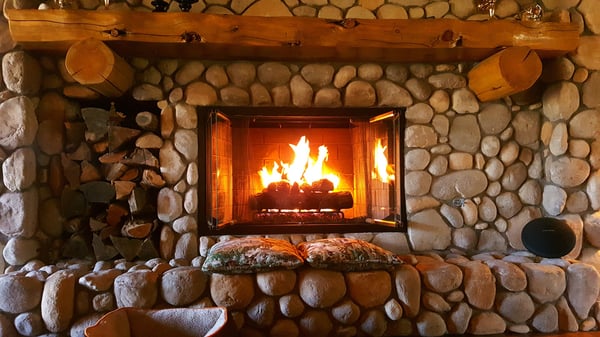
Fortunately, wood smoke is not an issue for most people who only encounter it occasionally at bonfires and barbecues. However, there is still a large number of people—especially those who use wood furnaces to heat their homes—who get exposed to wood smoke much more frequently.
Unfortunately, those most at risk from wood smoke are those who already suffer from lung diseases like COPD. Even small amounts of wood smoke can cause serious breathing problems for people who suffer from asthma, COPD, and other respiratory problems.
That's why an important part of staying healthy with COPD is knowing how to recognize and avoid respiratory hazards, including wood smoke. That means avoiding all sources of pollution and especially keeping the air inside your home healthy and clean.
That's why, in this guide, we're going to tell you everything you need to know about wood smoke and COPD. We'll explain how wood smoke affects your lungs, how it can worsen COPD, and how to avoid exposing yourself to harmful quantities of wood smoke.
We'll also discuss how using a wood-burning stove for heat is a major source of indoor air pollution and extremely hazardous for people with COPD. To help you keep your lungs healthy, we'll show you a variety of things you can do to make your wood-burning appliances safer or replace them with less hazardous alternatives.
Why Wood Smoke is So Bad For You

Wood smoke and COPD have one main thing in common: they both cause irreparable damage to your lungs over time. Wood smoke is also a serious respiratory irritant that can exacerbate the symptoms of COPD and other respiratory diseases.
Wood smoke is dangerous for two main reasons: First, it releases dangerous amounts of tiny particles that get trapped in your lungs when you breathe them in. Second, it emits a variety of toxic gases that can damage your lungs and impair your ability to breathe.
These toxic substances can trigger serious immediate symptoms as well as long-term heart and respiratory problems. That's why many health and advocacy organizations strongly warn against the practice of using wood to heat your home.
According to the Utah Physicians for a Healthy Environment, “wood smoke is uniquely toxic among all sources of urban air pollution.” This is in part because particle pollution from wood smoke is “extraordinarily small” and has the ability to causes prolonged damage to your body's cells.
Toxic Fumes from Wood Smoke
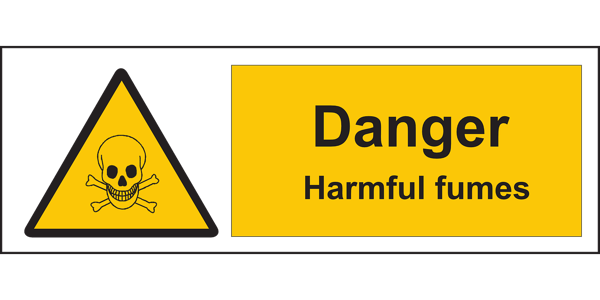
When wood burns (or combusts), it releases a wide variety of gases that are harmful to your lungs. These gases hurt your respiratory system mainly through inflammation, damage to delicate lung tissues, and by limiting your lungs' ability to absorb oxygen when you breathe.
Here's a quick snapshot of just a few of the many toxic fumes found in wood smoke:
- Nitrogen Oxides: can cause lung and airway irritation, shortness of breath, and an increased risk of lung infections, particularly for people with asthma or COPD
- Volatile Organic Compounds: can irritate the respiratory tract and some can even cause cancer
- Formaldehyde: can cause eye irritation, headaches, and can trigger respiratory symptoms like coughing and wheezing
- Hydrocarbons: cause lung inflammation, respiratory symptoms, and can cause lung diseases like asthma and COPD
- Benzene: can cause anemia, excessive bleeding, and suppress your immune system
- Sulfur Dioxide: causes eye irritation, respiratory inflammation, and bronchospasms, especially in people with COPD and other respiratory problems
- Dioxins: can cause cancer
- Carbon Monoxide: reduces your lungs' ability to absorb oxygen, straining your lungs and cardiovascular system; it can both cause and worsen respiratory symptoms and, in high enough levels, cause suffocation
- Acrolein: can irritate your eyes and respiratory tract
Ultra-fine Particles from Burning Wood

Wood smoke contains tons of microscopic particles, often called ultrafine particles, which experts consider to be the greatest health hazard caused by smoke. When you breathe in air contaminated by these tiny particles, they get trapped and stay deep inside your lungs.
The most dangerous ultrafine particles are known as PM2.5, which stands for particles that are smaller than 2.5 microns across. For reference, that's about half the size of a red blood cell or 30 times smaller than the width of a human hair.
Wood smoke produces a large number of PM2.5 particles, which are incredibly toxic to your lungs and cardiovascular system. These ultrafine particles can also irritate your eyes, your nose, and even your digestive system.
These tiny airborne particulates have been proven time and time again to be directly linked to a variety of serious respiratory and cardiovascular conditions. These include respiratory decline, asthma, heart disease, COPD, and chronic respiratory symptoms.
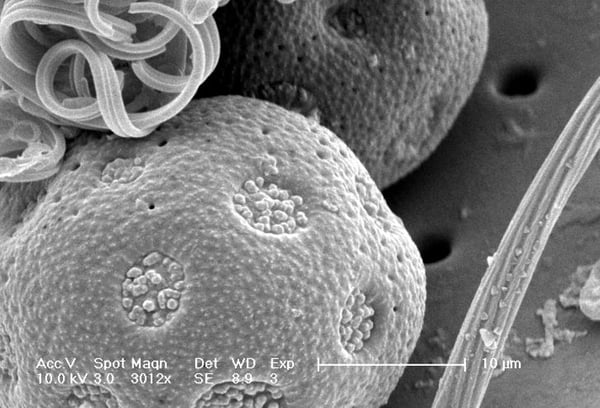
Fine particulates can even trigger heart attacks in people with existing cardiovascular disease, a health problem that is very common among COPD patients. Particle pollution is also linked to premature death in people suffering from heart disease and COPD.
You are more likely to develop health problems when the concentration of particulates in the air is high and you are exposed to them regularly over a long period of time. One common way that people get exposed to harmful levels of particle pollution long-term is by using wood-burning appliances to heat their homes.
Wood Smoke and COPD
Smoke from wood-burning stoves and fireplaces is both a cause of COPD and a major hazard for people who have COPD already. That's why it's so important for all people, and especially COPD patients, to be aware of the dangers of wood smoke.
Most importantly, you should never rely on a wood-burning stove to heat your home during the winter if you suffer from COPD. The indoor pollution it creates, even if it's only minor, is simply too much to risk for someone with a serious respiratory condition.
COPD makes your lungs much more sensitive to the damaging effects of harmful particles and gases. That means it takes less smoke to inflame your lungs and trigger respiratory symptoms.
Even a tiny amount of smoke could make you feel breathless or bring on a serious coughing fit. Even if you don't experience any immediate effects, being around wood smoke can still harm your lungs.
Like any source of pollution, breathing in the toxic byproducts of burning wood too often could cause your COPD to progress even faster. It can speed up lung function decline and cause permanent worsening of existing COPD symptoms.
That's why using a wood-burning stove to heat your home throughout the winter is such a major risk. Even if you take the proper precautions, you could still get exposed to enough wood smoke pollution over time to experience negative health effects.
Having COPD means your lungs are already damaged and you only have a limited amount of lung function remaining. The risk of losing even more lung function is just not worth using a wood-burning stove for heat.
How Much Wood Smoke is Too Much?

Burning wood in the fireplace every once in awhile isn't likely to cause major problems for most people. However, burning wood in your home frequently over many years can seriously damage your lungs.
Most of the risk from wood-burning stoves and fireplaces comes from how it can damage your lungs and cardiovascular system over the long term. That's why heating your home with a wood-burning stove is so much more dangerous than using your fireplace once in awhile; wood-burning furnaces have to run 24/7 all winter long to keep your house warm.
That adds up to months and months of exposure to wood fumes and particulates for many hours every day. What's more, the pollution can remain in your home for days or weeks after you stop burning wood, affecting you long after the winter is over.
Ultrafine particles don't disappear on their own, and they are small enough to pass straight through the vast majority of air filters. As a result, they continue to circulate through the air in your home until they settle into a fine dust on your walls, furniture, and floors.
This toxic particulate matter is especially pesky to get rid of because it constantly cycles between settling and getting kicked back up into the air. It may take multiple deep cleans and airing out your house to to get rid of all the particle pollution left over from weeks or months of burning wood.
However, the dangers of wood smoke are still very much present even if you don't burn wood every day. Even short-term exposure can irritate your lungs, which can cause serious problems for people with COPD.
If you have COPD, asthma, or any other respiratory problems, then breathing in any amount of wood smoke can be harmful. It can cause serious immediate symptoms as well as long-term damage that can make your existing chronic symptoms even worse.
What About “Safe” Wood-burning Systems?

You might think that having a modern, efficient, professionally-installed wood stove is enough to keep you safe. Unfortunately, no matter what precautions you take, burning wood can still endanger your health.
While modern, EPA-approved wood-burning stoves are much safer than older appliances, no wood-burning appliance is completely safe. There is always a risk that smoke or particulate matter could make it into your home.
Even well-ventilated wood-burning furnaces can still leak a steady stream of pollutants that build up in the air indoors over time. You release even more harmful gases and particles into your home every time you open the furnace door.
It's nearly impossible to burn wood in a wood stove or fireplace without introducing wood smoke pollution into your home. A good rule of thumb is that if you can smell the fire at all, then you are inevitably also breathing in the toxic gases and ultra-fine particulates from the smoke.
No matter how you cut it, burning wood for heat is much riskier than using a modern gas or electric furnace. If you have COPD, asthma, or another respiratory condition, it's always best to assume that no wood-burning appliance is safe, especially for extended periods of use.
Other Wood-Burning Hazards
There are other costs to burning wood besides the negative effects on your health. Wood-burning stoves and fireplaces are actually a major cause of environmental pollution and cause more than fifteen thousand house fires every year.
Pollution Caused by Wood Burning

In addition to polluting the air indoors, home wood-burning also causes a surprising amount of outdoor air pollution. In fact, the World Health Organization estimates that outdoor pollution caused by residential wood burning caused approximately 9,200 deaths in the US in 2010.
In te San Francisco Bay area, nearly thirty percent of the particle pollution present during the winter comes from wood-burning in home fireplaces and stoves. Other studies show that burning wood creates even more pollution than burning oil, coal, or gas.
This is one of the major reasons why countries around the world discourage wood burning and urge people who do burn wood to use more modern, efficient stoves. Doing so could significantly reduce outdoor air pollution during the winter months and reduce the risk your wood stove poses to your fellow neighbors and citizens.
Fires Caused by Wood Burning
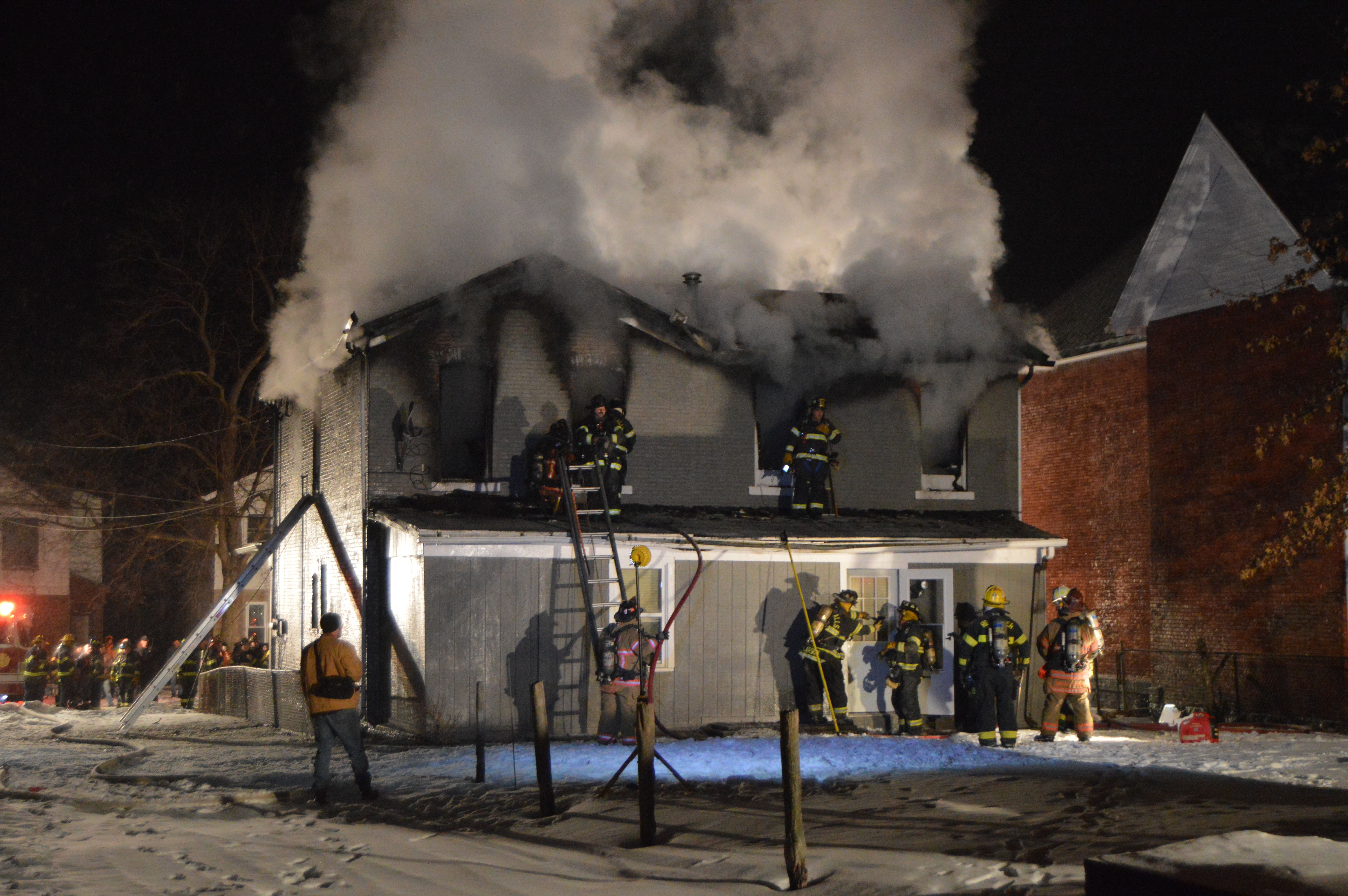
Every year in the US, about thirty people die and eighty people are injured in house fires caused by wood-burning stoves and fireplaces alone. Contrary to what most people believe, the vast majority of these deaths and injuries are the result of smoke inhalation rather than burns.
Uncontrolled fires release massive amounts of noxious fumes and fine particles that build up quickly inside a house. Just a couple minutes of breathing this smoke can cause smoke inhalation, respiratory failure, and permanent lung damage.
Smoke inhalation is life-threatening for healthy adults, but it's even more deadly for people with COPD and other lung diseases. Since their lungs already function poorly, COPD patients are much more vulnerable to suffocation and suffering from disabling breathing problems from the smoke.
That's why, if you burn wood in your home, it's important to consider the immediate risk of uncontrolled fires as well as the long-term costs to your health. Even if you escape from a house fire without getting hurt, the smoke you inhaled in the meantime could still cause serious, long-term damage to your lungs.
Alternatives to Burning Wood for Heat

If you use a wood-burning stove or furnace to keep your home warm, it may be time to consider upgrading to a better heating system. There are several other home heating options that are both cheaper and more efficient than burning wood for heat.
Despite what many people believe, heating your home with wood is not exactly budget-friendly. In fact, wood-burning stoves and furnaces are generally more expensive to run than other home heating options.
Even if you are hesitant to take on the initial cost and hassle of replacing your home heating system, remember that doing so may actually save you money in the long run. Even if you have to take a temporary hit to your budget, you can't place a value on the benefit of protecting yours and your family's health.
Here are some of the benefits of switching to a non-wood-burning heating system:
- Fewer emissions and outdoor pollution
- Significantly less indoor pollution
- Extremely simple to use and maintain
- More energy-efficient
- More effective at heating
- Often cheaper to run and maintain
- Eliminates the need to buy or store fuel
Here are some home heating options that don't burn wood:
- Central gas heating furnace
- Central electric heating furnace
- Boiler (radiant heating system)
- Solar Heater
- Heat Pump
How to Make Your Wood-Burning System Safer
Ideally, you should not use a wood-burning stove at all, especially if you have COPD. Just about any other heating option is better and safer for your lungs and overall health.
However, if you still choose to use a wood stove or furnace, there are many things you can do to reduce your risk. If you follow he best wood-burning practices, you can minimize the amount of harmful pollution your wood-burning stove emits into your home.
Get a Modern, EPA-Approved Appliance

There are many reasons to upgrade your old wood-burning stove to an EPA-certified model. Modern wood-burning stoves are much more efficient, environmentally-friendly, and significantly safer than older wood-burning appliances.
Unfortunately, the EPA estimates that 65% of wood stoves in the US are old and inefficient models. If your home uses one of these older stoves, then upgrading to a newer model could significantly reduce the risk it poses to yours and your family's health.
Here are some more benefits of using an EPA-certified wood-burning stove:
- They reduce pollution by 50-60 percent
- They use less fuel (about one-third less wood)
- They burn fuel more efficiently
- They circulate heat more efficiently (less heat loss)
Because of new EPA regulations introduced in 2015, nearly all wood-burning heating appliances now sold in the US must meet the EPA's requirements. These requirements are designed to reduce both indoor and outdoor pollution by ensuring that wood stoves emit no more than 4.5 grams of particulate matter per hour.
That means just about any wood stove that you buy from a US retailer should be EPA-certified and create relatively low amounts of pollution. However, even the safest wood-burning stove is still less safe and more polluting than non-wood-burning heating appliances.
If you use an older wood stove and you or anyone else in your household suffers from COPD, then upgrading your furnace should be a top priority. Home wood-burning is simply too hazardous for vulnerable lungs, especially if you don't use an appliance that meets modern safety standards.
Depending on where you live, you may even be eligible to participate in a wood stove change-out program. These programs may be able to help you cover some of the cost of installing a more efficient wood stove (or another type of heating system) if you otherwise couldn't afford to replace your old, inefficient stove.
To learn what options are out there, take a look at the EPA's complete list of certified wood stoves here. You can also contact your local air quality agency to see if there are any wood stove exchange programs in your area that can help you manage the cost.
Opt for a Pellet Stove

If you must use a fuel-burning appliance to heat your home, you should know that there are other options besides a typical wood-burning stove or furnace. One of these options is a pellet stove, which is generally cleaner and safer to use than a traditional wood-burning stove.
Pellet stoves are a special type of fuel-burning appliance that burn small manufactured pellets instead of firewood. These pellets are usually made up of compressed sawdust or wood chips, but some stoves can also burn pellets made of compacted paper, grass, corn, and other organic materials.
Of all of the different wood-burning appliances out there, pellet stoves are often considered the most clean and efficient option. They produce less smoke and are much easier to use and manage than traditional wood-burning stoves.
One thing that makes pellet stoves cleaner than wood-burning stoves is the type of fuel they use; pellets are reliably drier and more uniform in shape and size than firewood. Pellets are manufactured to contain just the right amount of moisture, and they tend to burn more evenly and completely in the stove.
It also takes much less effort to keep a fire going in a pellet stove. Most have auto-start ignitions and automated pellet feeding systems that make re-fueling the stove incredibly easy. In fact, most pellet stoves can keep themselves going for about 24 hours on a single hopper load.
Pellet stoves also get hotter because they use fans to circulate the air in the stove and ensure minimum heat loss. Unlike wood stoves, pellet stoves require electricity to power the hopper, ignition, and fans.
Pellet stoves generally cost about the same price as a typical wood-burning stove, but the fuel can be more pricey. To learn more about pellet stoves and how they compare to wood stoves, you can read a more in-depth overview here from This Old House.
Don't Try to Install a Wood-Burning Stove Yourself
When it comes to home renovations and installations, many people decide to go the DIY route in order to save a little money. However, installing your own wood-burning stove is definitely not something you should ever try to do on your own.
Wood-burning stoves are difficult to install properly and safely, and it's just too risky to be done by a non-professional. It's one of those situations where “good enough” won't do, because small mistakes can cause life-threatening fires and deadly indoor pollution.
You could lose all of the benefits of getting a cleaner and safer wood-burning stove if you make mistakes during installation. A modern wood stove with a faulty installation could be even worse for your health than an old, inefficient stove that has been properly installed.
That's why the EPA and many other health and safety organizations advise homeowners to always hire a professional, certified technician to install wood-burning stoves. These technicians know all the techniques and standards for installing and ventilating your stove properly.
It is particularly important to ensure that your wood stove meets modern health and safety standards if someone in the household suffers from COPD or another respiratory condition. Only a professional can truly ensure that your wood stove is as safe as it can be.
If health is your top priority, then you should always leave your wood stove installations and inspections up to the experts. Save your DIY ambitions for a different household project that won't be as hazardous if you make an error.
Get Regular Cleanings and Inspections
Wood stoves need yearly cleanings and inspections in order to keep them safe. That way, you can catch leaks and dangerous buildup in the stovepipe before they become major hazards.
The main thing you have to look out for is creosote, which is sticky or crusty residue that wood smoke leaves in chimneys and stovepipes. It's not too dangerous in small amounts, but if it builds up too thick it can catch flame and cause an uncontrolled fire.
Creosote can take three different forms: a sticky liquid, a crumbly deposit, and a thick tar. You can clean out minor areas of creosote build-up with a wire brush, but you may need to call in a professional stovepipe or chimney cleaner to get rid of thicker, harder deposits.
The more you use your wood-burning stove or fireplace, the more often you should check your chimney or stovepipe for leaks, creosote, and any other foreign objects that could clog it up. You can inspect your stove and stovepipe yourself, but it's best to have a certified technician come in at least once a year to inspect your stove and do any necessary cleaning or repairs.
Use the Right Kind of Wood
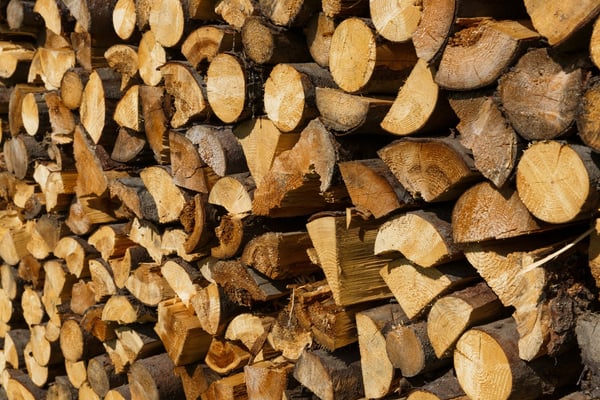
The kind of wood you burn can significantly affect how much pollution it emits. That's why you should only use clean, dry, hard woods in your wood-burning stove at home.
Dry wood is important because it produces less smoke and burns more evenly. All firewood should be properly dried out for at least 6 months before use.
Wet or “green” wood creates less heat and may even pose a danger of exploding inside your stove. You can tell if your wood is too wet if it crackles and pops excessively as it burns.
It's also important to use wood that comes from hardwood trees instead of softwood trees. Hard woods burn longer and more evenly, while soft woods burn too quickly and create larger amounts of smoke.
Finally, you should never burn any treated woods like pallet wood, plywood, construction scraps, or pressure-treated lumber. These types of wood are likely to contain chemical additives and residues that produce extremely toxic fumes when burned.
Here are some of the best types of wood to use for firewood:
- Oak wood
- Hickory wood
- Maple Wood
- Ash Wood
- Beech wood
Keep the Fire Hot
The hotter your fire burns, the less pollution it creates. That's because a lower heat or smoldering fire causes “incomplete combustion,” which produces higher amounts of harmful gases and particles.
If your fire burns very hot, it is more likely to achieve complete combustion. This results in less indoor air pollution and a lower risk of experiencing negative health effects from burning wood.
Get a HEPA Filter for Your Home
Most filters can't catch the tiny toxic particles that get released into the air when you burn wood. However, there is a special kind of filter, called a HEPA filter, that is capable of trapping these ultrafine airborne particulates.
Because of this, using a certified HEPA filter can reduce the health risks of burning wood in your home. Studies show it can reduce fine particle pollution by up to 75 percent and reduce respiratory inflammation in homes with wood-burning stoves.
HEPA filters can also remove other common respiratory irritants, like pollen and mold spores from the air. This can be very helpful for people with respiratory diseases like COPD who experience allergies or other respiratory symptoms a home.
When picking out a HEPA filtration appliance, make sure you know the approximate square footage of the space you want to filter. If you choose a filter that is too small for the space, it won't be able to filter the air effectively.
When deciding where to place your HEPA filters, prioritize the room where your furnace is located and the places you and your family tend to spend the most time. For example, your bedroom is a great spot for a HEPA filter since you spend many hours sleeping there every single day.
Other Tips for Burning Wood Safely
- Only open the doors to your wood-burning stove when necessary; keep them shut as often as possible and close them quickly after stoking or re-fueling the fire.
- Keep a carbon monoxide detector near your wood stove and inside every single room in your home.
- Always keep the area around the stove clear of anything flammable, including books, rugs, and curtains.
- Check the smoke detectors in your home regularly to ensure that they still have battery life and are operating correctly.
- Do not burn wood on no-burn days or when your air quality forecast shows hazardous levels of pollution.
- Check for cracks, leaks, and creosote build-up in your stovepipe or fireplace regularly, and get it inspected annually by a certified technician
- Always keep a fire extinguisher nearby in case of an uncontrolled fire.
Conclusion
In order to stay as healthy as possible with COPD, you have to take special care to protect your lungs from all sources of smoke. That includes tobacco smoke, exhaust fumes, and particularly smoke from wood-burning appliances.
If you have COPD, then you need to do everything you can to protect every bit of healthy lung tissue that you have left. That means avoiding wood smoke and especially avoiding burning wood to heat your home.
Healthy lungs start with a healthy home that is free from smoke and unnecessary sources of pollution. Rejecting wood-burning heating appliances and reducing how often you burn wood in and around your home is a great first step toward making the air in your home cleaner and healthier to breathe.


.png)



